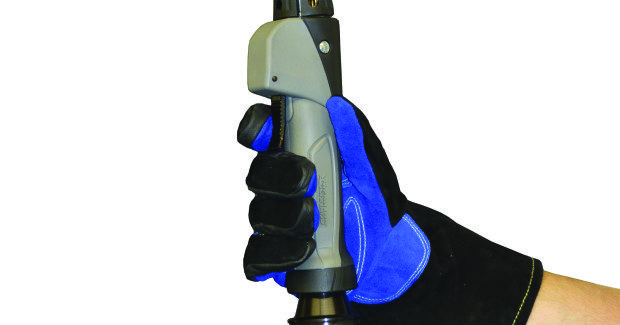Fume Extraction Guns: What to Know for the Best Performance
Knowing some basic details about fume extraction guns, as well as good technique for using them, can help welders gain the best performance from this equipment.
Posted: September 5, 2014
Safety is always a priority in the welding operation, whether in a small fabrication shop or a large manufacturing facility. Part of creating a safe, comfortable environment — as well as one that is compliant with environmental regulations — is to implement steps to reduce weld fume. The addition of fume extraction guns, in combination with a fume extraction device or filtration system, is a good option for many companies.
Knowing some basic details about fume extraction guns, as well as good technique for using them, can help welding operators gain the best performance from this equipment.
WHAT, WHEN AND HOW OF FUME EXTRACTION GUNS
Fume guns work well for applications in confined spaces, where the need to remove the weld fume at the source — away from the welding operator’s breathing zone — is especially critical. These include applications in heavy equipment manufacturing, shipbuilding and some general fabrication. High amperage, high deposition rate applications are also good candidates for fume extraction gun usage, as are those using stainless steel or other such materials that generate greater hexavalent chromium levels. They are particularly well suited to solid wire welding, but some fume extraction guns can accommodate self-shielded flux-cored wires, too.
Fume extraction guns are typically available in models ranging from 300 amps to 600 amps, with varying cable styles and handle designs. Most work in the same general way, by mass flow — the movement of material initiated by a vacuum chamber in the fume extraction gun. The vacuum chamber suctions the fumes through the handle of the gun, into the gun’s hose through a port on the filtration system. To gain the most weld fume capture, it is best to use fume extraction guns in the flat or horizontal position (as opposed to out-of-position).
TIPS AND TECHNIQUES
Careful techniques are important to gain the best results from a fume extraction gun and to minimize the welding operator’s exposure to the weld fume.
- Use the correct gun angle. When using a solid wire, weld at an angle of 0 to 15 deg, using a push technique. For flux-cored wire (which generates more fume and creates slag), use a drag technique with a 0 to 15 deg angle. For parts set up at a 0 to 30 deg angle, keep the gun straight (vertical) so when the weld fume rises, the gun can capture it.
- 2. Pause at the end of welds. Pausing for 10 seconds to 15 seconds at the end of a weld (without depositing weld metal) allows the gun to capture residual fumes as the weld bead is cooling.
- 3. Use the correct stickout or wire extension. When using a fume extraction gun to weld with flux-cored wire, it’s possible to extend the contact-tip-to-work- distance to around ½ in to 3/4 in. For solid wire applications, try to keep the stickout to 1/2 in or less to maximize fume capture.
- 4. Adjust the air control regulator for optimal results. Fume extraction guns feature adjustable extraction control regulators at the front of the gun handle or internally, depending on the manufacturer. These regulators allow welding operators to increase suction as needed without affecting shielding gas coverage. Adjusting the air control regulator to the appropriate level can be a matter of trial and error, so it’s a good idea to test welding on scrap material to optimize the suction rate before welding on an actual part. Experimenting this way can help determine the ideal balance between the downward flow of shielding gas and the upward flow of the suctioned air, ensuring good fume extraction and weld pool protection.
Remember, fume extraction guns are an excellent way to protect the welding operator from weld fume and to help maintain a cleaner welding environment, but they require some know-how. Considering the best applications for the job, along with some recommended techniques, can go far in gaining the best performance from this equipment.
















